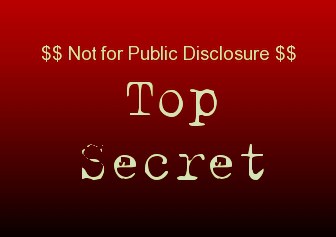 Telecommunications providers have convinced the Commerce Department to stop asking too many questions about the Internet service their customers receive, including the fees providers charge and the speeds provided, because the information is “proprietary” and “useful to our competitors.”
Telecommunications providers have convinced the Commerce Department to stop asking too many questions about the Internet service their customers receive, including the fees providers charge and the speeds provided, because the information is “proprietary” and “useful to our competitors.”
It’s all a part of the federal government’s broadband mapping project — to create detailed maps showing who has access to what types of broadband, at what speed and at what price. Those areas deemed underserved would be eligible for substantial broadband stimulus grants, paid for by taxpayers, and likely will be received by many of the same ISPs who are telling the government to butt out of their private business affairs.
In lieu of the detailed customer information the Commerce Department had been seeking, Verizon, Comcast, and AT&T have agreed to provide generic data about prices charged on a per-block basis and will also clue in the government as to the maximum speeds marketed to consumers, even if those speeds are not actually provided to individual customers.
Consumers Union was not happy with the Commerce Department’s decision, likening it to a cave-in.
Because the federal government will not allow the public to learn about the actual speeds achieved by customers, companies can continue to market and charge for an Internet service that doesn’t come close to achieving the speeds promised in advertising, according to Joel Kelsey, a telecommunications policy analyst for the consumer watchdog.
ISPs, particularly telephone line-based DSL service, routinely advertises speeds “up to” a certain level, but never guarantees those actual speeds will be achieved by customers. DSL service is sensitive to the quality of the telephone line and the distance of the cable between the customer’s home or business and phone company facilities. Longer distances always mean lower speeds, often much lower.
Cable companies rely on a shared bandwidth model, which means every home in a neighborhood shares a set amount of bandwidth. The more users on the system, the slower the maximum speed. In areas where cable companies have not upgraded service, or split neighborhoods up to reduce the number of residents sharing one “node,” speeds can dramatically drop at peak usage times.
“The actual speeds delivered to particular areas simply doesn’t match up,” Kelsey said. “The government gave a lot and received very, very little in return.”
ISPs complain that revealing these details will be useful information for competitors, and have steadfastly refused to provide it, despite the potential for those same companies to enjoy taxpayer dollars in the form of grants to finance specific broadband projects.
Since the federal government will rely heavily on the broadband mapping project to determine what projects have merit and meet an immediate need, who controls the map will have major influence on what projects will appear most eligible for stimulus money.
Public Knowledge continues to criticize the broadband mapping project as already being overrun by telecommunications special interests. Connected Nation, a group tailor-made to be granted approval for statewide mapping initiatives, has a board heavy with telecommunications corporation representation.
Art Brodsky, communications director of Public Knowledge, has implied the telecommunication ‘fix’ is already in, but conceding even more to the telephone and cable industry threatens to turn the broadband stimulus program into a creature of big telecom.
“The whole mapping exercise is already on its way to being substantially corrupted as the telecom industry’s creation, which exists to prevent data from being public, is collecting mapping contracts right and left through the efforts of their lobbying and influence. There is absolutely no reason for the National Telecommunications & Information Administration (administering the data collection process) to concede on the data collection. NTIA and its supporters in the Administration and in Congress should realize that if agency backs down on this assault from the industry, there will be that much less of value worth saving,” Brodsky wrote.
“At the end of the day, somebody is going to be in control of the mapping. It will either be the public, and the public interest, as represented by NTIA, or the industry,” he concluded.
The cable and phone companies declared victory. The American Cable Association, which represents smaller independent and rural operators which stand to receive a substantial amount in stimulus taxpayer funding, applauded the decision saying the government backing down would “improve and expedite the mapping effort,” said ACA president Matthew Polka.
Surprisingly, Larry Landis, a Republican-appointed Indiana utility regulatory commissioner and chairman of the federal-state group that will be responsible for the mapping project, also applauded the Commerce Department’s flexibility on getting access to detailed information.
Landis has past ties, albeit on the periphery, with AT&T through his former employer:
From 1985 through 1991, Landis was Vice President/Account Planning at an advertising firm informing the agency’s creative direction for clients such as Indiana Bell (now AT&T Indiana), at Handley & Miller, Inc.
The Center for Public Integrity graded the state of Indiana with a “C” for disclosure of utility commissioner outside ties in 2005. No apparent direct ties to telecommunications interests were found in Landis’ 2004 disclosure, the last one available from the Center.
Up to $350 million taxpayer dollars will be earmarked for the mapping program, tainted as it might be according to critics. The final map will be vital to determine what recipients will qualify for the $7.2 billion dollars in available funding for grant-worthy broadband projects. The money will be awarded to for-profit and non-profit groups, typically those that can best tailor their funding request to the requirements specified in the grant application process.


 Subscribe
Subscribe




